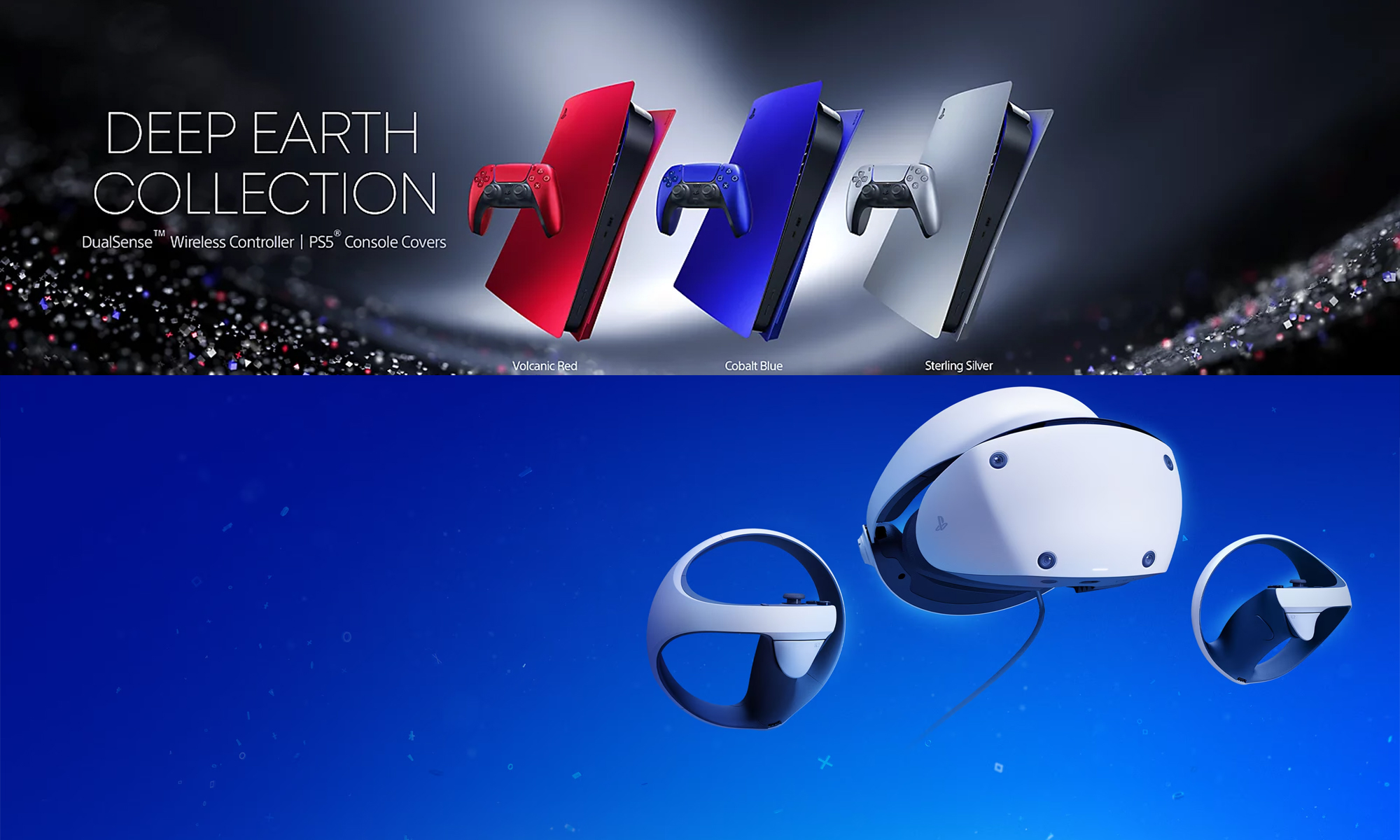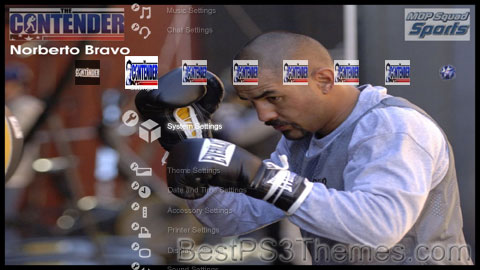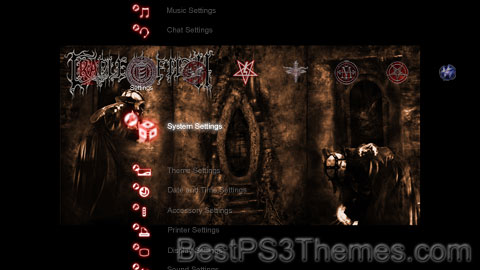South Park theme by yogosan
Download: SouthPark_6.p3t
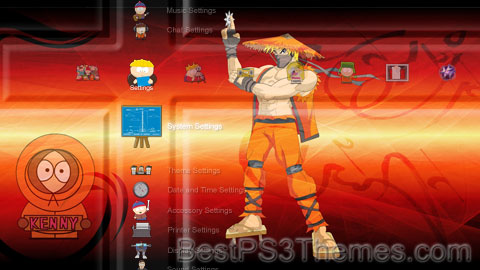
(6 backgrounds)
| South Park | |
|---|---|
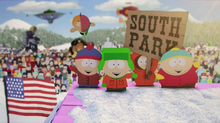 | |
| Genre | |
| Created by | |
| Developed by | Brian Graden |
| Showrunners |
|
| Voices of |
|
| Theme music composer | Primus |
| Composers |
|
| Country of origin | United States |
| Original language | English |
| No. of seasons | 26 |
| No. of episodes | 328 (list of episodes) |
| Production | |
| Executive producers |
|
| Producers |
|
| Cinematography | Kenny Gioseffi |
| Running time | 22 minutes[1] |
| Production companies |
|
| Original release | |
| Network | Comedy Central[nb 1] |
| Release | August 13, 1997 – present |
| Related | |
| The Spirit of Christmas | |
South Park is an American animated sitcom created by Trey Parker and Matt Stone and developed by Brian Graden for Comedy Central. The series revolves around four boys—Stan Marsh, Kyle Broflovski, Eric Cartman, and Kenny McCormick—and their exploits in and around the titular Colorado town. South Park also features many recurring characters. The series became infamous for its profanity and dark, surreal humor that satirizes a large range of subject matter.
Parker and Stone developed South Park from two animated short films, both titled The Spirit of Christmas, released in 1992 and 1995. The second short became one of the first Internet viral videos, leading to the series' production. The pilot episode was produced using cutout animation; the remainder of the series uses computer animation recalling the prior technique. Since the fourth season, episodes are generally written and produced during the week preceding its broadcast, with Parker serving as the lead writer and director.
Since its debut on August 13, 1997, 328 episodes of South Park have been broadcast. It debuted with great success, consistently earning the highest ratings of any basic cable program. Subsequent ratings have varied, but it remains one of Comedy Central's longest-running programs. In August 2021, South Park was renewed through 2027, and a series of television specials was announced for Paramount+, the first two of which were released later that year.[2][3] In October 2019, it was announced that WarnerMedia acquired exclusive streaming rights to South Park starting in June 2020 for HBO Max.[4] The series' twenty-sixth season premiered on February 8, 2023.[5]
South Park has received critical acclaim, and is included in various publications' lists of the greatest television shows. It has received numerous accolades, including five Primetime Emmy Awards and a Peabody Award. A theatrical film, South Park: Bigger, Longer & Uncut, was released in June 1999 to commercial and critical success, garnering an Academy Award nomination. In 2013, TV Guide ranked South Park the tenth Greatest TV Cartoon of All Time.[6]
Premise[edit]
Setting and characters[edit]
South Park centers around four boys: Stan Marsh, Kyle Broflovski, Eric Cartman and Kenny McCormick. The boys live in the fictional small town of South Park, located within the real-life South Park basin in the Rocky Mountains of central Colorado,[7] approximately a one-hour drive from Denver.[8] The town is also home to an assortment of other characters, including students, families, elementary school staff, and other various residents.[9] Prominent settings include South Park Elementary, various neighborhoods and the surrounding mountain range, actual Colorado landmarks, and the businesses along the town's main street, all of which are based on the appearance of similar locations in Fairplay, Colorado.[7][9] As one of the few television programs set in the Mountain West region that takes place outside the urban core of Denver, South Park frequently features the unique culture of the region, including cattle ranchers, Old West theme parks, snowy climates, mountaineering, Mormons, real-life Colorado locations such as Casa Bonita and Cave of the Winds, and many other regionally specific characteristics.
Stan is portrayed as an average American boy; however, he has many mishaps throughout the series. In the first 22 seasons, Stan lived in South Park, but in the episodes during and after season 22, Stan resided in Tegridy Farms. Kyle is Jewish, and his portrayal as one of the few such people in South Park is often dealt with satirically.[10] Stan is modeled after Parker, while Kyle is modeled after Stone. They are best friends, and their friendship, symbolically intended to reflect Parker and Stone's friendship,[11] is a common topic throughout the series. Cartman (as he is commonly referred to) is amoral and increasingly psychopathic, and is commonly portrayed as an antagonist. His staunch antisemitism has resulted in a progressive rivalry with Kyle.[10][12] Kenny, who comes from a poor family, tightly wears his parka hood to the point where it obscures most of his face and muffles his speech. During the first five seasons, Kenny died in almost every episode before reappearing in the next with no definite explanation. He was killed off in the fifth season episode "Kenny Dies", before being reintroduced in the sixth season finale, "Red Sleigh Down". Since then, Kenny is depicted as dying sporadically. During the first 58 episodes, the children were in the third grade. During the fourth season, they entered the fourth grade, where they have remained ever since.[13][14]
Plots are often set in motion by events, ranging from the fairly typical to the supernatural and extraordinary, which frequently happen in the town.[15] The boys often act as the voice of reason when these events cause panic or incongruous behavior among the adult populace, who are customarily depicted as irrational, gullible, and prone to overreaction.[7][16] They are frequently confused by the contradictory and hypocritical behavior of their parents and other adults, and often perceive them as having distorted views on morality and society.[9][17]
Themes and style[edit]
Each episode opens with a tongue-in-cheek all persons fictitious disclaimer: "All characters and events in this show—even those based on real people—are entirely fictional. All celebrity voices are impersonated.....poorly. The following program contains coarse language and due to its content it should not be viewed by anyone."[18][19]
South Park was the first weekly program to be rated TV-MA,[20] and is generally intended for adult audiences.[21][22][23] The boys and most other child characters use strong profanity, with only the most taboo words being bleeped during a typical broadcast.[9] Parker and Stone perceive this as the manner in which real-life small boys speak when they are alone.[24][25]
South Park commonly makes use of carnivalesque and absurdist techniques,[26] numerous running gags,[27][28] violence,[28][29] sexual content,[30][31] offhand pop-cultural references, and satirical portrayal of celebrities.[32]
Early episodes tended to be shock value-oriented and featured more slapstick-style humor.[33] While social satire had been used on the show occasionally earlier on, it became more prevalent as the series progressed, with the show retaining some of its focus on the boys' fondness of scatological humor in an attempt to remind adult viewers "what it was like to be eight years old".[10] Parker and Stone also began further developing other characters by giving them larger roles in certain storylines,[10] and began writing plots as parables based on religion, politics, and numerous other topics.[9] This provided the opportunity for the show to spoof both extreme sides of contentious issues,[34] while lampooning both liberal and conservative points of view.[9][16][35] Rebecca Raphael described the show as "an equal opportunity offender",[15] while Parker and Stone describe their main purpose as to "be funny" and "make people laugh",[36][37] while stating that no particular topic or group of people be exempt from mockery and satire.[16][32][38][39][40]
Parker and Stone insist that the show is still more about "kids being kids" and "what it's like to be in [elementary school] in America",[41] stating that the introduction of a more satirical element to the series was the result of the two adding more of a "moral center" to the show so that it would rely less on simply being crude and shocking in an attempt to maintain an audience.[36][37] While profane, Parker notes that there is still an "underlying sweetness" aspect to the child characters,[34] and Time described the boys as "sometimes cruel but with a core of innocence".[11] Usually, the boys or other characters pondered over what transpired during an episode and conveyed the important lesson taken from it with a short monologue. During earlier seasons, this speech commonly began with a variation of the phrase "You know, I've learned something today...".[42]
Development[edit]

Parker and Stone met in film class at the University of Colorado in 1992 and discovered a shared love of Monty Python, which they often cite as one of their primary inspirations.[43] They created an animated short entitled The Spirit of Christmas.[27] The film was created by animating construction paper cutouts with stop motion, and features prototypes of the main characters of South Park, including a character resembling Cartman but named "Kenny", an unnamed character resembling what is today Kenny, and two near-identical unnamed characters who resemble Stan and Kyle. Fox Broadcasting Company executive and mutual friend Brian Graden commissioned Parker and Stone to create a second short film as a video Christmas card. Created in 1995, the second The Spirit of Christmas short resembled the style of the later series more closely.[44] To differentiate between the two homonymous shorts, the first short is often referred to as Jesus vs. Frosty, and the second short as Jesus vs. Santa. Graden sent copies of the video to several of his friends, and from there it was copied and distributed, including on the internet, where it became one of the first viral videos.[27][11]
As Jesus vs. Santa became more popular, Parker and Stone began talks of developing the short into a television series about four children residing in the fictional Colorado town of South Park. Fox eagerly agreed to meet with the duo about the show's premise, having prided itself on edgier products such as Cops, The Simpsons, and The X-Files. However, during the meeting at the Fox office in Century City, disagreements between the two creators and the network began to arise, mainly over the latter's refusal to air a show that included a supporting talking stool character named Mr. Hankey. Some executives at 20th Century Fox Television (which was to produce the series) agreed with its then-sister network's stance on Mr. Hankey and repeatedly requested Parker and Stone to remove the character in order for the show to proceed. Refusing to meet their demands, the duo cut ties with Fox and its sister companies all together and began shopping the series somewhere else.[45][46][47]
The two then entered negotiations with both MTV and Comedy Central. Parker preferred the show be produced by Comedy Central, fearing that MTV would turn it into a kids show.[48] When Comedy Central executive Doug Herzog watched the short, he commissioned for it to be developed into a series.[27][49] Parker and Stone assembled a small staff and spent three months creating the pilot episode "Cartman Gets an Anal Probe".[50] South Park was in danger of being canceled before it even aired when the show fared poorly with test audiences, particularly with women. However, the shorts were still gaining more popularity over the Internet, and Comedy Central ordered a run of six episodes.[36][48] South Park debuted with "Cartman Gets an Anal Probe" on August 13, 1997.[51]
Production[edit]
Except for the pilot episode, which was produced using cutout animation, all episodes of South Park are created with the use of software, primarily Autodesk Maya.[52] As opposed to the pilot, which took three months to complete,[53] and other animated sitcoms, which are traditionally hand-drawn by companies in South Korea in a process that takes roughly eight to nine months,[27][35] individual episodes of South Park take significantly less time to produce. Using computers as an animation method, the show's production staff were able to generate an episode in about three weeks during the first seasons.[54] Now, with a staff of about 70 people, episodes are typically completed in one week,[27][34][35] with some in as little as three to four days.[55][56][57] Nearly the entire production of an episode is accomplished within one set of offices, which were originally at a complex in Westwood, Los Angeles, California and are now part of South Park Studios in Culver City, California.[49][53] Parker and Stone have been the show's executive producers throughout its entire history.[58] Debbie Liebling, who was Senior Vice President of original programming and development for Comedy Central, also served as an executive producer during the show's first five seasons, coordinating the show's production efforts between South Park Studios and Comedy Central's headquarters in New York City.[59][60] During its early stages, finished episodes of South Park were hastily recorded to D-2 to be sent to Comedy Central for airing in just a few days' time.[61] Each episode used to cost $250,000.[62]
Writing[edit]

Scripts are not written before a season begins.[63] Production of an episode begins on a Thursday, with the show's writing consultants brainstorming with Parker and Stone. Former staff writers include Pam Brady, who has since written scripts for the films Hot Rod, Hamlet 2 and Team America: World Police (with Parker and Stone), and Nancy Pimental, who served as co-host of Win Ben Stein's Money and wrote the film The Sweetest Thing after her tenure with the show during its first three seasons.[64][65] Television producer and writer Norman Lear, an alleged idol of both Parker and Stone, served as a guest writing consultant for the season seven (2003) episodes "Cancelled" and "I'm a Little Bit Country".[63][66][67] During the 12th and 13th seasons, Saturday Night Live actor and writer Bill Hader served as a creative consultant and co-producer.[68][69][70]
After exchanging ideas, Parker will write a script, and from there the entire team of animators, editors, technicians, and sound engineers will each typically work 100–120 hours in the ensuing week.[50] Since the show's fourth season (2000), Parker has assumed most of the show's directorial duties, while Stone relinquished his share of the directing to focus on handling the coordination and business aspects of the production.[27][71] On Wednesday, a completed episode is sent to Comedy Central's headquarters via satellite uplink, sometimes just a few hours before its air time of 10 PM Eastern Time.[27][72]
Parker and Stone state that subjecting themselves to a one-week deadline creates more spontaneity amongst themselves in the creative process, which they feel results in a funnier show.[27] The schedule also allows South Park to both stay more topical and respond more quickly to specific current events than other satiric animated shows.[10][73] One of the earliest examples of this was in the season four (2000) episode "Quintuplets 2000", which references the United States Border Patrol's raid of a house during the Elián González affair, an event which occurred only four days before the episode originally aired.[74] The season nine (2005) episode "Best Friends Forever" references the Terri Schiavo case,[25][34] and originally aired in the midst of the controversy and less than 12 hours before she died.[35][75] A scene in the season seven (2003) finale "It's Christmas in Canada" references the discovery of dictator Saddam Hussein in a "spider hole" and his subsequent capture, which happened a mere three days prior to the episode airing.[76] The season 12 (2008) episode "About Last Night..." revolves around Barack Obama's victory in the 2008 presidential election, and aired less than 24 hours after Obama was declared the winner, using segments of dialogue from Obama's real victory speech.[77]
On October 16, 2013, the show failed to meet their production deadline for the first time ever, after a power outage on October 15 at the production studio prevented the episode, season 17's "Goth Kids 3: Dawn of the Posers", from being finished in time. The episode was rescheduled to air a week later on October 23, 2013.[78]
Animation[edit]

The show's style of animation is inspired by the paper cut-out cartoons made by Terry Gilliam for Monty Python's Flying Circus, of which Parker and Stone have been lifelong fans.[48][11][79] Construction paper and traditional stop motion cutout animation techniques were used in the original animated shorts and in the pilot episode. Subsequent episodes have been produced by computer animation, providing a similar look to the originals while requiring a fraction of the time to produce. Before computer artists begin animating an episode, a series of animatics drawn in Toon Boom are provided by the show's storyboard artists.[50][80]
The characters and objects are composed of simple geometrical shapes and primary and secondary colors. Most child characters are the same size and shape, and are distinguished by their clothing, hair and skin colors, and headwear.[17] Characters are mostly presented two-dimensionally and from only one angle. Their movements are animated in an intentionally jerky fashion, as they are purposely not offered the same free range of motion associated with hand-drawn characters.[10][53][81] Occasionally, some non-fictional characters are depicted with photographic cutouts of their actual head and face in lieu of a face reminiscent of the show's traditional style. Canadians on the show are often portrayed in an even more minimalist fashion; they have simple beady eyes, and the top halves of their heads simply flap up and down when the characters speak.[38]
When the show began using computers, the cardboard cutouts were scanned and re-drawn with CorelDRAW, then imported into PowerAnimator, which was used with SGI workstations to animate the characters.[50][53] The workstations were linked to a 54-processor render farm that could render 10 to 15 shots an hour.[50] Beginning with
The Contender
Cradle of Filth
Cradle of Filth theme by SnXpinWhitey
Download: CradleofFilth.p3t
Cradle of Filth | |
|---|---|
 Cradle of Filth in 2018. (L–R): Dani Filth, Marek 'Ashok' Šmerda, Lindsay Schoolcraft (background), and Richard Shaw (Daniel Firth is out of frame). | |
| Background information | |
| Origin | Suffolk, England |
| Genres | Extreme metal |
| Years active | 1991–present |
| Labels |
|
| Members |
|
| Past members | |
| Website | www |
Cradle of Filth are an English extreme metal band formed in Suffolk in 1991. The band's musical style evolved originally from black metal to a cleaner and more "produced" amalgam of gothic metal, symphonic metal and other metal genres. Their lyrical themes and imagery are heavily influenced by Gothic literature, poetry, mythology and horror films. The band consists of its founding member, vocalist Dani Filth, drummer Martin 'Marthus' Škaroupka, bassist Daniel Firth, guitarists Marek 'Ashok' Šmerda and Donny Burbage, and keyboardist Zoe Marie Federoff.
The band has broken free from its original niche by courting mainstream publicity. This increased accessibility has brought coverage from the likes of Kerrang! and MTV, along with frequent main stage appearances at major festivals such as Ozzfest, Download and even the mainstream Sziget Festival. They have sometimes been perceived as Satanic by casual observers,[1] even though their outright lyrical references to Satanism are few and far between; their use of Satanic imagery has arguably always been more for shock value than any seriously held beliefs.[2]
History[edit]
Early years (1991–1996)[edit]

Cradle of Filth's first three years saw three demos (Invoking the Unclean, Orgiastic Pleasures Foul and Total Fucking Darkness) recorded amidst the sort of rapid line-up fluctuations that have continued ever since, with the band having more than thirty musicians in its history. An album entitled Goetia was recorded prior to the third demo and set for release on Tombstone Records, but all tracks were wiped when Tombstone went out of business and the band could not afford to buy the recordings from the studio.[3] The band eventually signed to Cacophonous Records, and their debut album, The Principle of Evil Made Flesh, was Cacophonous's first release in 1994. A step-up in terms of production from the rehearsal quality of most of their demos, the album was still nevertheless a sparse and embryonic version of what was to come, with lead singer Dani Filth's vocals in particular bearing little similarity to the style he was later to develop. The album was well-received however,[4] and as recently as June 2006 found its way into Metal Hammer's list of the top ten black metal albums of the last twenty years.[5]
Cradle's relationship with Cacophonous soon soured, the band accusing the label of contractual and financial mismanagement. Acrimonious legal proceedings took up most of 1995,[6] and the original version of the band's second album, Dusk... and Her Embrace was recorded by the Principle... lineup for Cacophonous but scrapped. Subsequently re-worked with new band members for Music For Nations (see below), the embryonic Cacophonous version was eventually released as Dusk... and Her Embrace: The Original Sin in July 2016.
The band finally signed to Music for Nations in 1996 after only one more contractually obligated Cacophonous recording: the EP V Empire or Dark Faerytales in Phallustein, which, it has since been conceded, was hastily written as a Cacophonous escape-plan.[6] Despite the circumstances of its release however, its handful of tracks are staples of the band's live sets to this day, and "Queen of Winter, Throned" was listed among twenty-five "essential extreme metal anthems" in a 2006 issue of Kerrang! magazine. The EP also marked Sarah Jezebel Deva's debut with the band, replacing Andrea Meyer, Cradle's first female vocalist and self-styled "satanic advisor".[7] Deva appeared on every subsequent Cradle release and tour until 2010's Darkly, Darkly, Venus Aversa, but was never considered a full band member, since she also performed with The Kovenant, Therion and Mortiis, and fronted her own Angtoria project along with Cradle's former bass guitar player, Dave Pybus.
Music for Nations era (1996–2001)[edit]
The re-worked and re-recorded Dusk... and Her Embrace followed the same year: a critically acclaimed breakthrough album that greatly expanded the band's fan-base throughout Europe and the rest of the world.[8] Cradle's inaugural album for Music for Nations set the tone for what was to follow. The album's production values matched the band's ambition for the first time, whilst Filth's vocal gymnastics were at their most extreme.
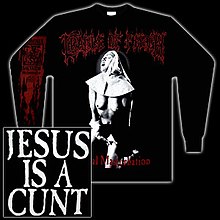
The increasingly theatrical stage shows of the 1997 European tour helped keep Cradle in the public eye, as did a burgeoning line of controversial merchandise, not least the notorious T-shirt depicting a masturbating nun on the front and the slogan "Jesus is a cunt" in large letters on the back. The T-shirt is banned in New Zealand,[9] a handful of fans have faced court appearances and fines for wearing the shirt in public, and some band members themselves attracted a certain amount of hostile attention when they wore similar "I Love Satan" shirts to the Vatican.[10] Alex Mosson, the Lord Provost of Glasgow from 1999 to 2003, called the shirts (and by implication the band) "sick and offensive". The band used the quote on the back cover of the 2005 DVD Peace Through Superior Firepower.
In 1998, Filth began his long-running "Dani's Inferno" column for Metal Hammer, and the band appeared in the BBC documentary series Living with the Enemy (on tour with a fan and his disapproving mother and sister)[11] and released its third studio album, Cruelty and the Beast. A fully realised concept album based on the legend of the "Blood Countess" Elizabeth Báthory, the album boasted the casting coup of Ingrid Pitt providing guest narration as the Countess; a role she first played in Hammer Film Productions' 1971 film Countess Dracula. The album led to Cradle's US debut,[12] and Dani claimed it in 2003 as the Cradle album of which he was most proud, although he conceded dissatisfaction with its sound quality.[13]
The following year the band continued primarily to tour, but did release the EP From the Cradle to Enslave, accompanied by the band's first music video, which formed the centrepiece of the DVD PanDaemonAeon. Replete with graphic nudity and gore, the video was directed by Alex Chandon, who would go on to produce further Cradle promo clips and DVD documentaries, as well as the full-length feature film Cradle of Fear.
The band released their fourth studio album in the Autumn of 2000. Midian was based around the Clive Barker novel Cabal and its subsequent film adaptation Nightbreed.[14] Like Cruelty and the Beast, Midian featured a guest narrator, this time Doug Bradley, who starred in Nightbreed but remains best known for playing Pinhead in the Hellraiser series. Bradley's line "Oh, no tears please" from the song "Her Ghost in the Fog" is a quote of Pinhead's from the first Hellraiser ("No tears, please. It's a waste of good suffering..."),[15] and Bradley would reappear on later albums Nymphetamine, Thornography and Godspeed on the Devil's Thunder. The video for "Her Ghost in the Fog" received heavy rotation on MTV2 and other metal channels, and the track also found its way onto the soundtrack of the werewolf movie Ginger Snaps (it would also feature, much later, in the video game Brütal Legend).
Sony interlude (2001–2004)[edit]
The longest-ever interim period between full-length Cradle albums was nevertheless a busy time for the band. Bitter Suites to Succubi was released on the band's own Abracadaver label, and was a mixture of four new songs, re-recordings of three songs from The Principle of Evil Made Flesh, two instrumental tracks and a cover of The Sisters of Mercy's "No Time to Cry". Stylistically similar to Midian, the collection was, at the time, unique among Cradle releases in that it featured exactly the same band members as its predecessor. Further stop-gap releases followed in the form of the "best of" package Lovecraft & Witch Hearts and the live album, Live Bait for the Dead. Finally, the band (principally Dani) also found time to appear in the horror film Cradle of Fear while they negotiated their first major-label signing with Sony Music.
Everything in the band is a democracy decision.. Dani has just been painted black in the press...To be honest, to find six people who think along the same lines and share the same interests and like have everything else sort of on a similar level. This band takes up so much time from us, it’s hard to keep everybody focused at the same time and on the same page. So it’s a lot to do with why there have been so many members.
— Adrian Erlandsson, on the working relationships within the band and line-up changes.[16][17]
Damnation and a Day arrived in 2003; Sony's heavyweight funding underwriting Cradle's undiminished ambition[18] by finally bringing a real orchestra into the studio (the 101 piece Budapest Film Orchestra including the 40 piece Choir replacing the increasingly sophisticated synthesisers of previous albums) and thus marking the band's belated gestation—for one album only—into full-blown symphonic metal. Damnation featured the band's most complex compositions to date, outran its predecessors by a good twenty minutes and produced two more popular videos: the Jan Švankmajer-influenced Mannequin and Babalon A.D. (So Glad for the Madness), based on Pier Paolo Pasolini's film Salò. Roughly half the album trod the conceptual territory of John Milton's Paradise Lost—showing the events of the fall of man through the eyes of Lucifer[12]—while the remainder comprised stand-alone tracks such as the Nile tribute "Doberman Pharaoh"[13] and the aforementioned "Babalon A. D."; a reference to Aleister Crowley. "Babalon A. D." was the first DVD-only single to reach the UK's top 40 charts, according to the Guinness Book of Records of British Hit Singles and Albums. Feeling that Sony's enthusiasm quickly palled however, Cradle jumped ship to Roadrunner Records after barely a year.[19]
Move to Roadrunner (2004–2010)[edit]

2004's Nymphetamine was the band's first full album since Dusk...and Her Embrace to not be based around any sort of overarching concept (although references to the works of H. P. Lovecraft are made more than once). Cradle's bass guitarist Dave Pybus described it as an "eclectic mix between the group's Damnation and Cruelty albums with a renewed vigour for melody, songmanship [sic] and plain fucking weirdness."[20] Nymphetamine debuted at No. 89 on the Billboard Top 200 chart, selling just under 14,000 copies,[21] and the band's growing acceptance by the mainstream was confirmed when the album's title track was nominated for a Grammy award.[22] The album's track "Coffin Fodder" was referenced in an episode of the Channel 4 sit-com The IT Crowd in February 2006.
Thornography was released in October 2006. According to Dani Filth, the title "represents mankind's obsession with sin and self... an addiction to self-punishment or something equally poisonous... a mania."[23] On the subject of the album's musical direction, Filth told Revolver magazine, "I'm not saying it's 'experimental', but we're definitely testing the limits of what we can do... A lot of the songs are really rhythmical—thrashy, almost—but they're all also really catchy."[24] A flurry of pre-release controversy saw Samuel Araya's original cover artwork scrapped and replaced in May 2006, although numerous CD booklets had already been printed with the original image.[19] Thornography received a similar reception to Nymphetamine, garnering generally positive reviews, but raising a few eyebrows with the inclusion of a cover of Heaven 17's "Temptation"[25][26][27] (featuring guest vocals from Dirty Harry), which was released as a digital single and accompanying video shortly before the album. Thornography entered the Billboard chart at No. 66, having sold nearly 13,000 copies.[28]
Long-term drummer Adrian Erlandsson departed the band in November 2006, with the intention of devoting his energies to his two side projects, Needleye and Nemhain. The official press release from Roadrunner saw Erlandsson state "I have enjoyed my time with Cradle but it is now time to move on. I feel I am going out on a high as Thornography is definitely our best album to date".[29] He was replaced by Martin Škaroupka.
Work on the eighth studio album, released in October 2008 as Godspeed on the Devil's Thunder, began early that year following a GWAR-supported tour which took place in Russia, Ukraine, United Kingdom, Romania, Slovakia and North America.[30] Godspeed is a concept album based around the legend of Gilles de Rais, a 15th-century French nobleman who fought alongside Joan of Arc and accumulated great wealth before becoming an occultist, sexual deviant and murderer.[31] Kerrang! preferred the album to the "relatively weak" Thornography, calling it "grandiose and epic",[32] while Metal Hammer said it had "genuine narrative depth and emotional resonance",[33] and Terrorizer called it "cohesive, consistent and convincing".[34] It sold 11,000 copies in its week of release, entering the Billboard 200 at No. 48.[35]
Peaceville Records (2010–2014)[edit]
Cradle's relationship with Roadrunner came to an end in April 2010, with the announcement that the band's next album would be released by the British independent label Peaceville Records, using Cradle's own Abracadaver imprint.[36] Dani Filth cited "the artistic restrictions and mindless inhibitions imposed by a major label" as the band's reason for going independent.[37] Early press releases named the new album All Hallows Eve,[38] but by August 2010 the title was confirmed as Darkly, Darkly, Venus Aversa.[37][39] Released on 1 November 2010, it is a concept album in the same vein as its predecessor, Godspeed on the Devil's Thunder; this time centring on the demon Lilith, the first wife of the biblical Adam,[36] and also making reference to Greek, Egyptian and Sumerian mythology, the Knights Templar and the Carmelite Nuns. The label referred to it as "a dark tapestry of horror, madness and twisted sex",[38] while Filth called its sound "creepily melodic, like Mercyful Fate or a dark Iron Maiden".[40] Metal Hammer's Dom Lawson felt it was "another sumptuous and spectacular eruption of gothic melodrama, perverted sonic schlock and balls-out extreme metal bombast", and likened it to an "instalment in an ongoing series of novels."[41]
An EP entitled Evermore Darkly, featuring "new tracks and rarities", was released in October 2011. The package included a DVD with a tour documentary, a live DVD recorded at 2011's Graspop festival and the video for "Lilith Immaculate".
In April 2012, the compilation album Midnight in the Labyrinth was released, featuring orchestral re-recordings of songs from the band's first three albums and the V Empire EP.[42] Dani Filth had described it in the preceding months as "reinventing" the tracks as "full soundtrack quality stuff... with choirs, strings and some narration".[43] This album's version of "Summer Dying Fast" was included on Evermore Darkly as a teaser for the full release (the Evermore track listing subtitles this version "Midnight in the Labyrinth breadcrumb trail"), and "A Gothic Romance (Red Roses for the Devil's Whore)" was released online via Peaceville's website on 4 April. Sarah Jezebel Deva returned to provide female vocals for Midnight in the Labyrinth; her first work with Cradle since her departure in 2008.
In July 2012, the band re-issued its back catalogue from 1994 to 2002, via The End Records.[44]
Cradle's tenth studio album, The Manticore and Other Horrors, was released on 29 October 2012 in Europe, and on 30 October in North America. Paul Allender told Ultimate Guitar that "The last thing we want to do is come out with another album that sounds like the last two. We decided to change direction and go back to what we used to do with the female vocals; all the strong melody lines and harmonies... I've put a lot of punk-orientated riffs back into it again. It's really gone quite dark and pretty hardcore."[45]
On 2 September 2013, via his monthly blog, Dani Filth announced the crowd-funded Cradle of Filth comic book, "The Curse of Venus Aversa", and "a career spanning double-disc 'best of'" compilation that is yet to be named.[46]
In March 2014, Cradle of Filth announced the first ever commercial release of their 1993 demo Total Fucking Darkness. The album arrived on CD and limited edition vinyl the following May, on the independent Mordgrimm label. It features all the tracks from the original cassette, plus previously unreleased rehearsal recordings and the sole surviving track from their abandoned Goetia album.[47]
Nuclear Blast Records (2014–2022)[edit]

In April 2014, Paul Allender stated on his official Facebook account that he had once again left Cradle of Filth, in favour of his new band White Empress.[48] Dani Filth stated about Allender departing the band: "Paul has been enthralled [sic] in his own project and he could not do the tour due to personal reasons. Since then the band has grown as a unit, we were only writing as one guitarist for the last three records and we now have two very competent guitarists. Paul had a very strong opinion about doing that [writing single guitar parts], and we're a two-guitar band. So that may be one of the things that kind of opened the fissure a bit."[49][50] James McIlroy also left the band at around this point due to imminent surgery for a spinal injury.[51] Both guitarists were replaced for upcoming tours by Marek "Ashok" Šmerda of the Czech groups Root and Inner Fear, and Richard Shaw of English acts Emperor Chung and NG26.[52]
On 2 April 2014, Cradle of Filth's website announced that they were working on their follow-up to The Manticore and Other Horrors. Dani Filth announced that they expected a Spring 2015 release and that three songs had already been written.[53]
At the moment all six members are working on material.... Everybody has contributed to this from Lindsay the keyboard player, Martin the drummer – everybody has been working very hard. We have to get most of it done by the time we get to Russia, so we have two and a half weeks and I have to finish the lyrics for a few songs but the songs are pretty much there; we just have to move stuff around and put some strange instrumentation.... This album will be very twin guitar driven, lots of very fast melodies a la Dusk... and Her Embrace and Cruelty and the Beast. We are aiming at 16–20 tracks then we will wheedle [sic] them down to make sure we have the best. It is very exciting.[50][54]
— Dani Filth
On 11 November 2014 it was reported on the official Cradle of Filth Facebook page that they had signed to Nuclear Blast Records for their new album and were expected to begin recording the follow-up to The Manticore And Other Horrors later the same month.[55] In early 2015, the working title of the album was revealed as Hammer of the Witches[56] (inspired by the 1486 treatise on the prosecution of witches by Heinrich Kramer[57]). This title was eventually confirmed as official. The album was recorded at Grindstone Studios in Suffolk, England, with a tentative initial release date of 26 June.[58] Over 21 and 22 March the band filmed scenes for a promo video for the song "Right Wing of the Garden Triptych". The shoot was in the hangar and fire station of former U.S. military base of Bentwaters,[59] with additional narrative scenes (featuring actresses in a bondage setting) filmed on a farmstead near the Imperial War Museum Duxford. The video was directed by Sam Scott-Hunter.[60]
On 21 April 2015, the album's release date was updated to sometime in July, and the band revealed Hammer of the Witches' cover artwork by the Latvian post-modernist artist Arthur Berzinsh.[61] The album was officially released through Nuclear Blast on 10 July 2015. The subsequent world tour included the band's largest set of UK dates for eight years in late 2015, and a set of North American shows in early 2016.
On 16 June 2017 the title of their twelfth studio album was revealed as Cryptoriana – The Seductiveness of Decay and it was given an official release date of 22 September 2017 through Nuclear Blast Records.[62]
On 10 February 2020, it was announced on the band's social media that keyboardist and vocalist Lindsay Schoolcraft had departed from the band, citing mental health reasons, as well as giving the band room to progress. In the post the band announced that a replacement had been found, but did not immediately disclose their identity.[63] Anabelle Iratni was later announced as the new keyboard player for the band in May 2021.[64]
The band's thirteenth album, Existence Is Futile, was released on 22 October 2021.[65] A music video was released for the single "Crawling King Chaos" in advance of the album on 30 July 2021.[66] On 4 May 2022, Dani Filth announced the departure of guitarist Richard Shaw[67] and keyboardist Anabelle. Filth stated, "We have to respect that people have personal commitments and/or sometimes find the career choice of being in a band like Cradle of Filth a tad overwhelming". At the same time, Donny Burbage joined as the new guitarist with Zoe Marie Federoff as the new keyboard player.[68]
Napalm Records (2022–present)[edit]
On 9 May 2022, the band announced that they had signed to Napalm Records.[69]
Vocalist Dani Filth mentioned in August 2022 that the band had been working on a collaboration with musician Ed Sheeran since the previous year.[70][71][72][73][74] Filth explained that Sheeran had begun recording his vocals for the collaboration, but that Sheeran's touring schedule and the birth of his child caused delays.[70] Sheeran's interest in a collaboration with Cradle of Filth stems from listening to metal bands like Cradle and Slipknot during his childhood.[70][73][74]
In 2023, a music video was released for "She is a Fire". The song is one of two studio tracks from the Existence is Futile recording sessions to be included on the live album Trouble and Their Double Lives, along with live tracks recorded during the band's Cryptoriana World Tour. Trouble and Their Double Lives was released on 28 April 2023.[75] Shortly after the release of the live album, the band entered the studio to begin recording their fourteenth studio album.[76]
Musical st
Isla Fisher by DK
Isla Fisher theme by Daniel Keen
Download: IslaFisher.p3t
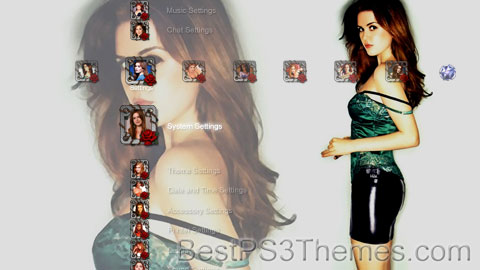
(7 backgrounds)
P3T Unpacker v0.12
Copyright (c) 2007. Anoop Menon
This program unpacks Playstation 3 Theme files (.p3t) so that you can touch-up an existing theme to your likings or use a certain wallpaper from it (as many themes have multiple). But remember, if you use content from another theme and release it, be sure to give credit!
Download for Windows: p3textractor.zip
Instructions:
Download p3textractor.zip from above. Extract the files to a folder with a program such as WinZip or WinRAR. Now there are multiple ways to extract the theme.
The first way is to simply open the p3t file with p3textractor.exe. If you don’t know how to do this, right click the p3t file and select Open With. Alternatively, open the p3t file and it will ask you to select a program to open with. Click Browse and find p3textractor.exe from where you previously extracted it to. It will open CMD and extract the theme to extracted.[filename]. After that, all you need to do for any future p3t files is open them and it will extract.
The second way is very simple. Just drag the p3t file to p3textractor.exe. It will open CMD and extract the theme to extracted.[filename].
For the third way, first put the p3t file you want to extract into the same folder as p3textractor.exe. Open CMD and browse to the folder with p3extractor.exe. Enter the following:
p3textractor filename.p3t [destination path]Replace filename with the name of the p3t file, and replace [destination path] with the name of the folder you want the files to be extracted to. A destination path is not required. By default it will extract to extracted.filename.
Haunted
Haunted theme by NightHawk
Download: Haunted.p3t
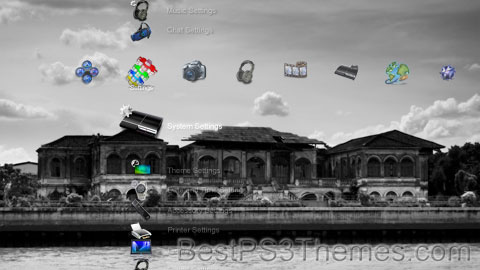
(8 backgrounds)
Haunted or The Haunted may refer to:
Books[edit]
- Haunted (Armstrong novel), by Kelley Armstrong, 2005
- Haunted (Cabot novel), by Meg Cabot, 2004
- Haunted (Palahniuk novel), by Chuck Palahniuk, 2005
- Haunted (Angel novel), a 2002 novel based on the television series Angel
- Haunted (The Hardy Boys), a 2008 novel featuring The Hardy Boys in the Undercover Brothers series
- Haunted, a 1988 novel by James Herbert
- Haunted, a 1990 novel in the Fear Street series by R.L. Stine
- Haunted: Tales of the Grotesque, a 1994 short-story collection by Joyce Carol Oates
Comics[edit]
- Haunted (Buffy comic), an anthology of comics based on the television series Buffy the Vampire Slayer
- Haunted (comics), a horror-suspense anthology comic book series
Film[edit]
- Haunted (1977 film), an American film starring Aldo Ray
- The Haunted (1991 film), an American made-for-TV film directed by Robert Mandel
- Haunted (1995 film), a UK film starring Aidan Quinn and Kate Beckinsale
- Haunted (2007 film), a Turkish film directed by Alper Mestçi
- Haunted – 3D, a 2011 Hindi film directed by Vikram Bhatt
Television[edit]
- Haunted (British TV series), a British supernatural drama series that ran from 1967 to 1968
- Haunted (2002 TV series), an American supernatural drama series
- Haunted (2018 TV series), an American paranormal docudrama series
- The Haunted (American TV series), a 2009 American paranormal docudrama series
- The Haunted (Philippine TV series), a 2019 Philippine horror drama series
Episodes[edit]
- "Haunted" (Arrow)
- "Haunted" (Criminal Minds)
- "Haunted" (Dead Like Me)
- "Haunted" (Dollhouse)
- "Haunted" (Highlander)
- "Haunted" (Law & Order: Special Victims Unit)
- "Haunted" (Sanctuary)
- "Haunted" (Tru Calling)
- "Haunted" (The Vampire Diaries)
Theatre[edit]
- Haunted, a 2009 play by Jon Claydon and Tim Lawler that starred Jessie Wallace
- Haunted, a 2009 play by Edna O'Brien
Music[edit]
Performers[edit]
- The Haunted (Swedish band), a Swedish metal band
- The Haunted (Canadian band), a 1960s Canadian garage rock band
Albums[edit]
- Haunted (Janita album), or the title song, 2010
- Haunted (Late Night Alumni album), 2011
- Haunted (Poe album), or the title song, 2000
- Haunted (Six Feet Under album), or the title song, 1995
- The Haunted (album), by the Swedish band The Haunted, 1998
- Haunted (EP), by Lalaine, or the title song, 2004
Songs[edit]
- "Haunted" (Beyoncé song), 2013
- "Haunted" (Human Nature song), 2004, also covered by Room 2012 in 2007
- "Haunted" (The Pogues song), 1986
- "Haunted" (Taylor Swift song), 2010
- "Haunted", by Annihilator from Metal
- "Haunted", by Charlotte Martin from On Your Shore
- "Haunted", by Deep Purple from Bananas
- "Haunted", by Diamante
- "Haunted", by Disturbed from Indestructible
- "Haunted", by Dusty Springfield from A Brand New Me (1992 reissue)
- "Haunted", by Evanescence from Fallen
- "Haunted", by Gary Numan from Jagged
- "Haunted", by Go West from Go West
- "Haunted", by Jewel from 0304
- "Haunted", by Kelly Clarkson from My December
- "Haunted", by The Moody Blues on their album Strange Times
- "Haunted", by Paul van Dyk from In Between
- "Haunted", by Rihanna from Good Girl Gone Bad
- "Haunted", by Stream of Passion from Embrace the Storm
- "Haunted", by Type O Negative from October Rust
- "The Haunted", by Memphis May Fire from The Hollow
- "The Haunted", by Trail of Tears from Profoundemonium
Video games[edit]
- Haunted, a video game from Deck13 Interactive
See also[edit]
- Haunt (disambiguation)
- Haunted attraction (simulated)
- Haunted house, a building believed to be a centre for supernatural occurrences
- List of haunted paintings, works of art described as being haunted or cursed
- List of reportedly haunted locations, sites of reported ghostly activity
- Haunts (disambiguation)
- Haunter (disambiguation)
- The Haunting (disambiguation)
- Ghostlore
- All pages with titles containing Haunted
Lost at Sea
Lost at Sea theme by NightHawk
Download: LostatSea.p3t
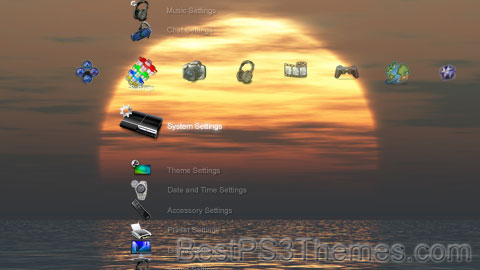
(11 backgrounds)
Lost at Sea may refer to:
Persons[edit]
Music[edit]
- Lost @ Sea, an album by The Lads, 1998
- Lost at Sea (Bounding Main album), 2005
- Lost at Sea (Craig's Brother album), 2001
- "Lost at Sea", a track on the album Standing Stone (1997) by Paul McCartney
- "Lost at Sea", a track from the album Clarity (2013) by Zedd featuring Ryan Tedder
- "Sæglópur" (Icelandic for "lost at sea"), a track in the album Takk... (2005) by Sigur Ros
Print[edit]
- Lost at Sea (comics), a 2003 graphic novel by Bryan Lee O'Malley
- Lost at Sea: The Jon Ronson Mysteries, a 2012 novel by Jon Ronson
Film[edit]
- Lost at Sea (film), a lost 1926 silent film directed by Louis J. Gasnier
Television[edit]
- "Lost at Sea" (NCIS), a 2012 episode of TV series NCIS
- "Lost at Sea", an hour-long episode of the Disney Channel Original Series The Suite Life on Deck
Rambo NEW
Rambo NEW theme by Russ Howe
Download: RamboNEW.p3t
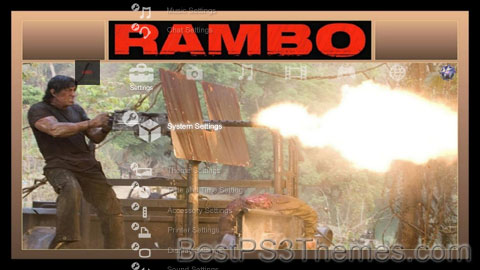
(16 backgrounds)
P3T Unpacker v0.12
Copyright (c) 2007. Anoop Menon
This program unpacks Playstation 3 Theme files (.p3t) so that you can touch-up an existing theme to your likings or use a certain wallpaper from it (as many themes have multiple). But remember, if you use content from another theme and release it, be sure to give credit!
Download for Windows: p3textractor.zip
Instructions:
Download p3textractor.zip from above. Extract the files to a folder with a program such as WinZip or WinRAR. Now there are multiple ways to extract the theme.
The first way is to simply open the p3t file with p3textractor.exe. If you don’t know how to do this, right click the p3t file and select Open With. Alternatively, open the p3t file and it will ask you to select a program to open with. Click Browse and find p3textractor.exe from where you previously extracted it to. It will open CMD and extract the theme to extracted.[filename]. After that, all you need to do for any future p3t files is open them and it will extract.
The second way is very simple. Just drag the p3t file to p3textractor.exe. It will open CMD and extract the theme to extracted.[filename].
For the third way, first put the p3t file you want to extract into the same folder as p3textractor.exe. Open CMD and browse to the folder with p3extractor.exe. Enter the following:
p3textractor filename.p3t [destination path]Replace filename with the name of the p3t file, and replace [destination path] with the name of the folder you want the files to be extracted to. A destination path is not required. By default it will extract to extracted.filename.
Street Fighter #4
Street Fighter theme by Snowlegend
Download: StreetFighter_4.p3t
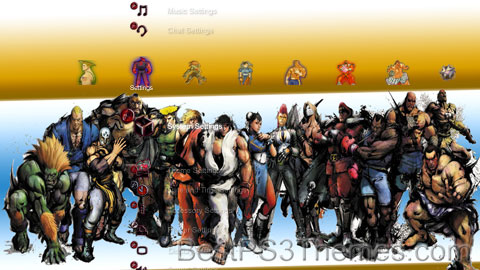
(5 backgrounds)
This article needs additional citations for verification. (September 2023) |
Street Fighter[a] is a Japanese media franchise centered on a series of fighting games developed and published by Capcom. The first game in the series was released in 1987, followed by six other main series games, various spin-offs and crossovers, and numerous appearances in other media. Its best-selling 1991 release Street Fighter II established many of the conventions of the one-on-one fighting genre.
Street Fighter is one of the highest-grossing video game franchises of all time and one of Capcom's flagship series, with total sales of 54 million units worldwide as of March 2024[update].[2] It is also one of the highest-grossing media franchises of all time.
Games[edit]
Street Fighter (1987)[edit]

Street Fighter, designed by Takashi Nishiyama and Hiroshi Matsumoto, debuted in arcades in 1987.[3][4] The player controls martial artist Ryu to compete in a worldwide martial arts tournament spanning five countries and 10 opponents. A second player can control Ryu's friendly American rival, Ken Masters. The player can perform three punch and kick attacks, each varying in speed and strength, and three special attacks: the Hadōken, Shōryūken, and Tatsumaki Senpūkyaku, performed by executing special joystick and button combinations.[5]
Street Fighter was ported to many popular home computers, including MS-DOS. In 1987, it was released on the TurboGrafx-CD console as Fighting Street.[6] In 2005, Street Fighter was included in Capcom Classics Collection: Remixed for the PlayStation Portable and Capcom Classics Collection Vol. 2 for the PlayStation 2 and Xbox. It is in the Street Fighter 30th Anniversary Collection for eighth-generation consoles and Windows.[citation needed]
Street Fighter II (1991)[edit]
Street Fighter II was released in 1991 following an unsuccessful attempt to brand the 1989 beat 'em up game Final Fight as the Street Fighter sequel. It is one of the earliest arcade games for Capcom's CP System hardware and was designed by Akira Nishitani and Akira Yasuda, who also made Final Fight and Forgotten Worlds.[7]
Street Fighter II: The World Warrior is the first one-on-one fighting game to give players a choice from a variety of player characters with different moves, allowing for more varied matches. Each player character has a unique fighting style with approximately 30 or more moves, including new grappling moves and throws, and two or three special attacks. In the single-player mode, the player character is pitted sequentially against the seven other main characters before confronting the final four bosses, exclusively CPU-controlled. As in the original, a second player can join anytime for competitive matches.[citation needed]
The original Japanese version of Street Fighter II introduced an African-American boxer boss character that shared the physical characteristics and likeness of real-life boxer Mike Tyson. (The character was originally named "Mike Bison". To avoid a likeness infringement lawsuit, Capcom rotated the names of three of the boss characters for international versions of the game. The final boss, named Vega in the Japanese version, was given the M. Bison name, the talon-wielding Spanish warrior, named Balrog in the Japanese version, was renamed Vega and the boxer became Balrog.[8] In a 2019 interview, Mike Tyson himself was asked about the "Mike Bison" character design, and revealed that he was "honored by the impersonation".[9])
Street Fighter II eclipsed its predecessor in popularity, eventually turning Street Fighter into a multimedia franchise.[10] It had an unexpectedly phenomenal impact on gaming. More than $10 billion in inflation-adjusted revenue as of 2017 was grossed from all versions, mostly from arcades.[11] More than 14 million cartridges were sold for the Super Nintendo Entertainment System and Sega Genesis/Mega Drive.[12]
The first official update to the series was Street Fighter II: Champion Edition, pronounced Street Fighter II Dash in Japan, as noted by the prime notation on the logo. The four computer-controlled boss characters are human-playable and two players can choose the same character, leaving one character with an alternate color pattern. It has slightly improved graphics, including differently colored backgrounds and refined gameplay. A second upgrade, Street Fighter II: Hyper Fighting (Street Fighter II Dash Turbo in Japan), was produced in response to the various bootleg editions of the game. Hyper Fighting offers faster gameplay than its predecessors, different character costume colors and new special techniques. Super Street Fighter II: The New Challengers, the third revision, gives the game a complete graphical and musical overhaul and introduces four new playable characters. It is also the first game for Capcom's CP System II arcade hardware. The fifth arcade installment, Super Street Fighter II Turbo, Super Street Fighter II X in Japan, brings back the faster gameplay of Hyper Fighting, a new type of special techniques known as "Super Combos" and a hidden character, Akuma.[citation needed]
Numerous home versions of the Street Fighter II games have been produced following the release of the original game. The original version, Street Fighter II: The World Warrior, was ported to the Super NES in 1992, which is Capcom's best-selling game as of 2008[update].[12] A Japanese-only port of Street Fighter II Dash for the PC Engine came in 1993. That year, two home versions of Hyper Fighting were released: Street Fighter II Turbo for Super NES and Street Fighter II: Special Champion Edition (Street Fighter II Dash Plus in Japan) for Genesis. The following game, Super Street Fighter II, was also ported to the Super NES and Genesis in 1994. That year, Super Street Fighter II Turbo was released for the 3DO Interactive Multiplayer and for Windows, released by the now-defunct GameTek.[citation needed]
In 1997, Capcom released the Street Fighter Collection for the PlayStation and Sega Saturn. This is a compilation including Super and Super Turbo, and Street Fighter Alpha 2 Gold (Street Fighter Zero 2′ (Dash) in Japan), an updated version of Street Fighter Alpha 2. It was followed by Street Fighter Collection 2 (Capcom Generation Vol. 5 in Japan), also released for the PlayStation and Saturn, which includes the original Street Fighter II, Champion Edition, and Hyper Fighting. In 2000, Capcom released Super Street Fighter II X for Matching Service exclusively in Japan for the Dreamcast. This version of the game features an online two-player versus mode. In 2003, Capcom released Hyper Street Fighter II: The Anniversary Edition for the arcades in Japan and Asia to commemorate the 15th anniversary of the series. As the final arcade installment, the game is a hybrid version of Super Turbo, which allows players to select between versions of characters from all five previous Street Fighter II games. Hyper was released in North America and the PAL region via its ports for the PlayStation 2 and the Xbox, released as part of the Street Fighter Anniversary Collection along with Street Fighter III: 3rd Strike. In 2005, the three games in Street Fighter Collection 2 were included in Capcom Classics Collection Vol. 1 for PlayStation 2 and Xbox. A version of Super Turbo, along with the original Street Fighter, was later included in the 2007 compilation Capcom Classics Collection Vol. 2, also released for the PlayStation 2 and Xbox. Street Fighter II and Super Street Fighter II are also available as downloadable games for select cellular phone services.[citation needed]
An updated version of Super Street Fighter II Turbo came to the PlayStation Network and Xbox Live Arcade services in 2008.[13] The game, Super Street Fighter II Turbo HD Remix, has fully redrawn artwork, including HD sprites 4.5x the original size, drawn by artists from UDON. This is the first time the Street Fighter characters have had new sprites, drawn by Capcom, since Capcom vs. SNK 2 in 2001. The game has several changes which address character balancing issues, but also features the original arcade version gameplay so that players can choose between the two.[14]
Ultra Street Fighter II: The Final Challengers is an updated version of 1994's Super Street Fighter II Turbo for the Nintendo Switch. The game features two graphical styles—classic pixel art and updated high-definition art. New gameplay mechanics and modes have been introduced and tweaks have been made to the game's balance. It has two more characters, who are classic alternate evil form of the classic characters Ryu and Ken, Evil Ryu and Violent Ken, and Akuma is now playable.[citation needed]
Street Fighter Alpha (1995)[edit]
Street Fighter Alpha: Warriors' Dreams (Street Fighter Zero in Asia and Mexico), was released in 1995. It uses the same character designs Capcom previously employed in Darkstalkers and X-Men: Children of the Atom, with settings and character designs heavily influenced by Street Fighter II: The Animated Movie. Alpha expands on the Super Combo system from Super Turbo by extending Super Combo meter into three levels, allowing for super combos to be stored up and introducing Alpha Counters and Chain Combos, also from Darkstalkers. The plot of Alpha is set between the first two Street Fighter games and fleshes out the backstories and grudges held by many of the classic Street Fighter II characters.[15] It has a playable roster of ten immediately playable characters and three unlockable fighters, comprising not only younger versions of established characters, but also characters from the original Street Fighter and Final Fight, such as Adon and Guy.[citation needed]
Street Fighter Alpha 2 has all-new stages, music, and endings for some characters, some of which overlap with those from the original Alpha.[16] It also discards the Chain Combo system in favor of Custom Combos, which requires a portion of the Super Combo meter to be used. Alpha 2 retains all 13 characters from the original and adds five new characters to the roster along with hidden versions of returning characters. Alpha 2 is followed by a slightly enhanced arcade release, Street Fighter Zero 2 Alpha, released in Japan and Brazil, ported to home consoles as Street Fighter Alpha 2 Gold and Zero 2′ Dash in Japan.[citation needed]
The third and final Alpha game, Street Fighter Alpha 3, was released in 1998 following the release of the original Street Fighter III: 2nd Impact and Street Fighter EX. Alpha 3 introduces three selectable fighting styles and further expands the playable roster to 28 characters.[17] Console versions of the three games, including the original Alpha 2 and Alpha 2 Gold, were released for the PlayStation and Sega Saturn, although versions of specific games in the series were also released for the Game Boy Color, Super NES, Dreamcast, and Windows. The home console versions of Alpha 3 further expands the character roster by adding the remaining "New Challengers" from Super Street Fighter II. The Dreamcast version of the game was backported to the arcades in Japan as Street Fighter Zero 3 Upper. A version of Upper, titled Alpha 3 outside Japan, was released for the Game Boy Advance and added three characters from Capcom vs. SNK 2. A PlayStation Portable version, Alpha 3 MAX, or Zero 3 Double Upper in Japan, contains the added characters from the GBA version and Ingrid from Capcom Fighting Jam.[citation needed]
Street Fighter EX (1996)[edit]
In 1996, Capcom co-produced a 3D fighting game Street Fighter EX with Arika, a company founded by Street Fighter II planner Akira Nishitani. It was developed for the PlayStation-based ZN-1 hardware. EX combined the established Street Fighter cast with original characters created and owned by Arika. It was followed by an upgraded version, Street Fighter EX Plus, in 1997, which expanded the character roster. A home version with additional features and characters, Street Fighter EX Plus Alpha, was released for the PlayStation during the same year.[citation needed]
A sequel was released in 1998, Street Fighter EX2, developed for the ZN-2 hardware. Custom combos were reintroduced and the character roster was expanded upon even further. In 1999, EX2 also received an upgraded version, Street Fighter EX2 Plus. A port of EX2 Plus was released for the PlayStation in 1999.[citation needed]
The third game in the series, Street Fighter EX3, was released as a launch game for the PlayStation 2 in 2000. This game included a tag team system, a mode that let a single player fight up to three opponents simultaneously, and another mode that allowed players to give the new character, Ace, a selection of special and super moves after purchasing them with experience points. The cast included many characters from the previous game.[citation needed]
Some of the Arika-owned characters from the series were later featured in other games developed by the company. The Namco-distributed arcade game Fighting Layer featured Allen Snider and Blair Dame from the original EX, while Skullomania would reappear in the PlayStation game Fighter Maker. A spiritual successor to Fighting Layer, featuring an initial roster consisting entirely of Arika-owned EX characters, Fighting EX Layer, was released in 2018.[18]
Crossover series (1996)[edit]
Capcom produced fighting games involving licensed characters from other companies and their own properties. In 1994, Capcom released the Marvel-licensed fighting game X-Men: Children of the Atom, which features Akuma from Super Turbo as a hidden character. It was followed by Marvel Super Heroes in 1995, which features Anita from Night Warriors
BloodSpillXXT – Warhawk
BloodSpillXXT – Warhawk theme by BloodSpillXXT
Download: BloodSpillXXTWarhawk.p3t
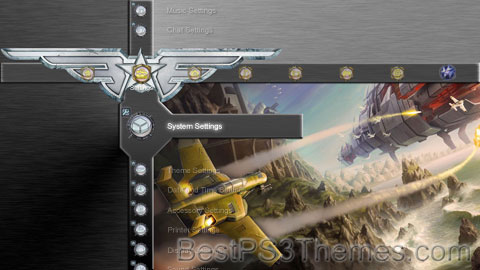
(5 backgrounds)
P3T Unpacker v0.12
Copyright (c) 2007. Anoop Menon
This program unpacks Playstation 3 Theme files (.p3t) so that you can touch-up an existing theme to your likings or use a certain wallpaper from it (as many themes have multiple). But remember, if you use content from another theme and release it, be sure to give credit!
Download for Windows: p3textractor.zip
Instructions:
Download p3textractor.zip from above. Extract the files to a folder with a program such as WinZip or WinRAR. Now there are multiple ways to extract the theme.
The first way is to simply open the p3t file with p3textractor.exe. If you don’t know how to do this, right click the p3t file and select Open With. Alternatively, open the p3t file and it will ask you to select a program to open with. Click Browse and find p3textractor.exe from where you previously extracted it to. It will open CMD and extract the theme to extracted.[filename]. After that, all you need to do for any future p3t files is open them and it will extract.
The second way is very simple. Just drag the p3t file to p3textractor.exe. It will open CMD and extract the theme to extracted.[filename].
For the third way, first put the p3t file you want to extract into the same folder as p3textractor.exe. Open CMD and browse to the folder with p3extractor.exe. Enter the following:
p3textractor filename.p3t [destination path]Replace filename with the name of the p3t file, and replace [destination path] with the name of the folder you want the files to be extracted to. A destination path is not required. By default it will extract to extracted.filename.
Bioshock w/ New Icons + Sound V1.1
Bioshock w/ New Icons + Sound V1.1 theme by Dennis “F-Rott” Ferrand
Download: Bioshock_4v1.1.p3t
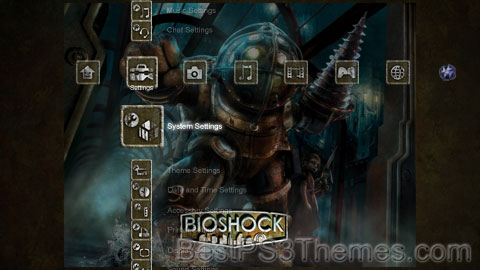
(6 backgrounds)
P3T Unpacker v0.12
Copyright (c) 2007. Anoop Menon
This program unpacks Playstation 3 Theme files (.p3t) so that you can touch-up an existing theme to your likings or use a certain wallpaper from it (as many themes have multiple). But remember, if you use content from another theme and release it, be sure to give credit!
Download for Windows: p3textractor.zip
Instructions:
Download p3textractor.zip from above. Extract the files to a folder with a program such as WinZip or WinRAR. Now there are multiple ways to extract the theme.
The first way is to simply open the p3t file with p3textractor.exe. If you don’t know how to do this, right click the p3t file and select Open With. Alternatively, open the p3t file and it will ask you to select a program to open with. Click Browse and find p3textractor.exe from where you previously extracted it to. It will open CMD and extract the theme to extracted.[filename]. After that, all you need to do for any future p3t files is open them and it will extract.
The second way is very simple. Just drag the p3t file to p3textractor.exe. It will open CMD and extract the theme to extracted.[filename].
For the third way, first put the p3t file you want to extract into the same folder as p3textractor.exe. Open CMD and browse to the folder with p3extractor.exe. Enter the following:
p3textractor filename.p3t [destination path]Replace filename with the name of the p3t file, and replace [destination path] with the name of the folder you want the files to be extracted to. A destination path is not required. By default it will extract to extracted.filename.
